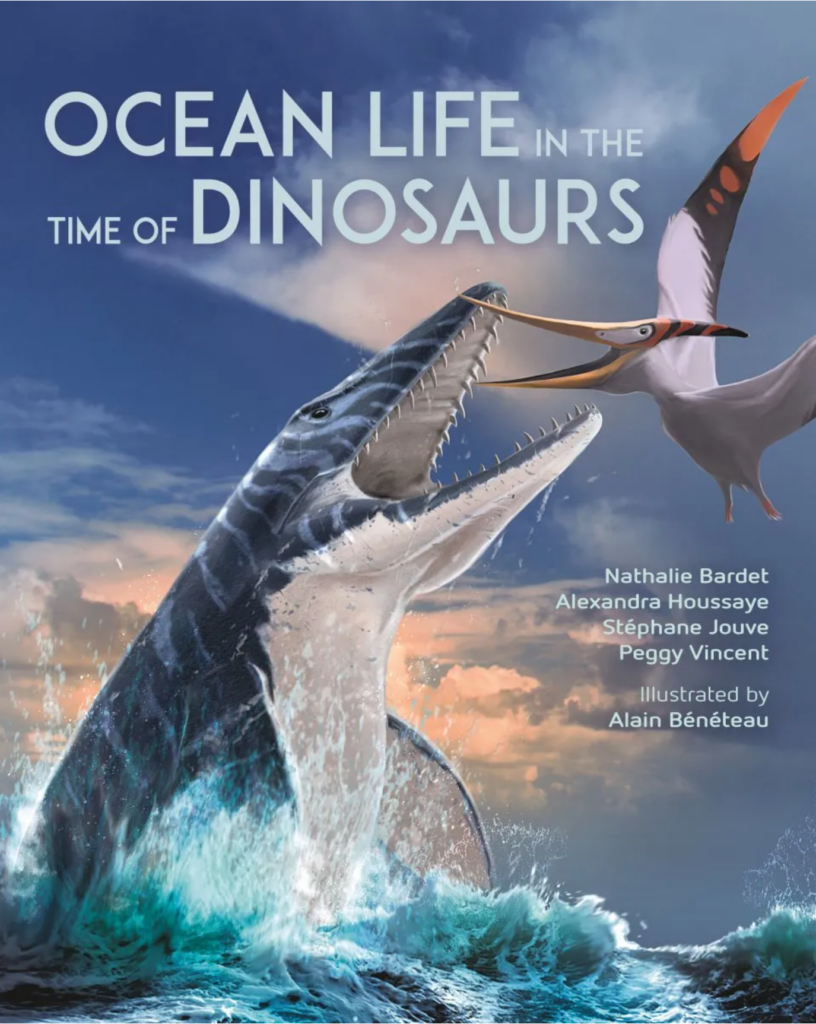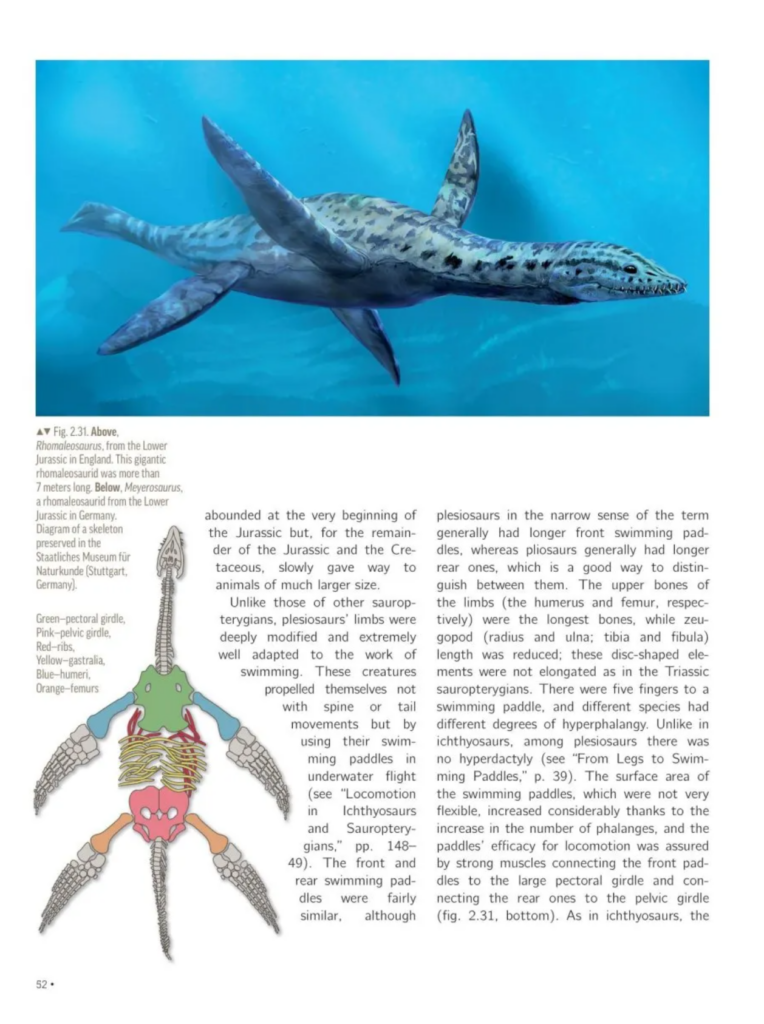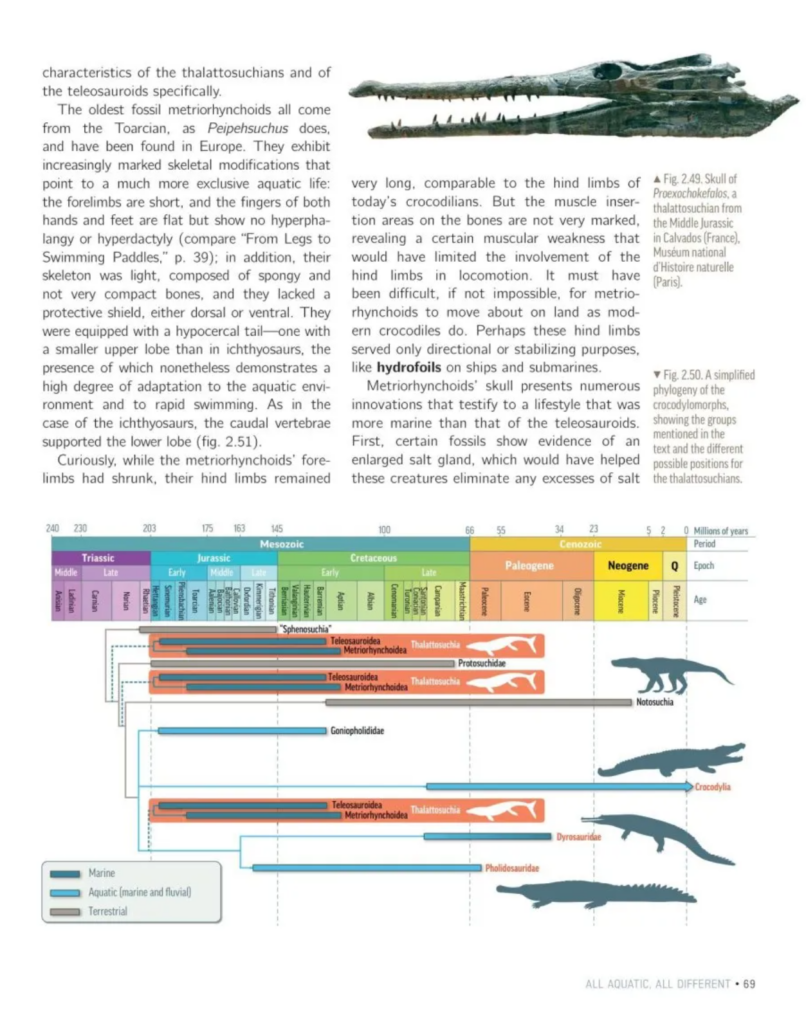 ***** A richly illustrated entry-level book
***** A richly illustrated entry-level book
In this review, I am revisiting the spectacular diversity of marine reptiles that flourished in the planet’s oceans and waterways during the time of the dinosaurs. After having gone without popular titles on the subject for almost two decades since Richard Ellis’s Sea Dragons in 2005, suddenly we have three. Last year (April–May) I reviewed The Princeton Field Guide to Mesozoic Sea Reptiles and Ancient Sea Reptiles, and mentioned that this book was in the works. Ocean Life in the Time of Dinosaurs was originally published in French in 2021 as La Mer au Temps des Dinosaures by Belin/Humensis and has been translated into English by Mark Epstein. Technically speaking that makes it the first of this recent crop, though the English translation was only published in November 2023, after the aforementioned two works. It brings together four French palaeontologists and one natural history illustrator for a graphics-heavy introduction. So, what is in this book, and how does it compare to the other titles?
Ocean Life in the Time of Dinosaurs breaks down into two halves. The obligatory first short chapter introduces the state of the world during the Mesozoic Era 252–66 million years ago (mya), specifically the position of the continents (the palaeogeography) and the various extinction crises by which we divide this time span. After this, the first half is a very long chapter 2 that discusses all the major and minor groups: the “big three” (ichthyosaurs, plesiosaurs, and mosasaurs); the groups with survivors today such as the crocodylomorphs and sea turtles; and lesser-known groups such as hupehsuchians and thalattosaurs. The second half of the book consists of five chronological chapters that help you put all this diversity into some sort of logical order. This starts with life’s first coy attempts at reptiles-returning-to-the-sea in the Palaeozoic Era, the main event of the Mesozoic in three chapters (the Triassic, Jurassic, and Cretaceous), and the Cenozoic Era in which the survivors of the K–Pg extinction continued and sometimes thrived.

The book’s second half stood out to me for two reasons. First, it helps prevent the same rookie mistake that is often made regarding dinosaurs: they did not all live at the same time. This may sound incredibly obvious and yet is easily and frequently forgotten. Where marine reptiles are concerned, a good example of this is that the ichthyosaurs evolved ~252 mya and went extinct ~90 mya, while the mosasaurs evolved ~100 mya and went extinct 66 mya at the K–Pg boundary, the two groups thus overlapping for “only” 10 million years. Turtles and crocodylomorphs survived the K–Pg extinction and positively flourished, though some groups subsequently went extinct and left no living descendants, such as the dryosaurids (a crocodylomorph lineage, extinct ~40 mya). The second reason I liked this chronological section is that it is largely told through the lens of key fossil localities around the globe (here, among others, Monte San Giorgio, Holzmaden, and the Oxford Clay). Though their names are often familiar and each of these deposits offers a unique view of a certain ecosystem at a certain time, they rarely get much attention themselves. The authors here provide just that little bit of extra information on their geography and stratigraphy, the history of their discovery and exploitation, and the palaeoenvironment that can be deduced from them.
Ocean Life in the Time of Dinosaurs is richly illustrated in full colour with photos, diagrams, and paleoart by Alain Bénéteau, including single and double-page spreads. There are several cladograms mapped onto timelines, with the simplified phylogeny of crocodylomorphs on page 69 particularly useful in visualising the uncertain placement of thalattosuchians. Drawings show unique anatomical adaptations, explaining e.g. the evolution of turtle shells. The text is regularly interspersed with boxes discussing notable species or concepts such as proposed forms of swimming or adaptation of bones to life underwater. In short, the visual presentation of this book is outstanding.

I normally prefer to review each book on its own merits, but given that we now have two richly illustrated introductory books, there is no avoiding the mosasaur in the room. How does Ocean Life in the Time of Dinosaurs stack up against Darren Naish’s Ancient Sea Reptiles? As I also observe about his Dinopedia, Naish is particularly interested in taxonomy and species diversity. Whereas the discussion of the different groups here takes up 55 pages in chapter 2, Naish does this in 132 pages and six chapters. He goes into more detail on taxonomic conundrums and for most groups discusses more species. What the French quartet here adds are the five chronological chapters, extending their coverage of evolutionary events to before and after the Mesozoic. As mentioned, they also give more detail on key fossil sites whereas Naish briefly mentions some of these in his chapter 1. My impression is that palaeontology buffs will want to get both books, despite the inevitable overlap. If, however, you are looking to buy just one book then Ocean Life in the Time of Dinosaurs is the most entry-level of the two, while Ancient Sea Reptiles provides more detail (and in that scenario would be my book of choice). My original observation regarding Greg Paul’s The Princeton Field Guide to Mesozoic Sea Reptiles, that it is more of a reference work to be consulted after either of these books, still holds.
Ocean Life in the Time of Dinosaurs is available from our online bookstore.






